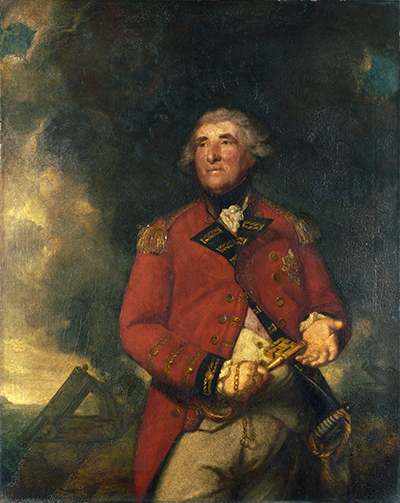 Buy Art Prints Now
Buy Art Prints Nowfrom Amazon
* As an Amazon Associate, and partner with Google Adsense and Ezoic, I earn from qualifying purchases.
Lord Heathfield of Gibraltar is a portrait by Joshua Reynolds. General Elliot protected Gibraltar, a British territory from the French and Spanish allies from a long siege in 1782. Gibraltar was regarded as a key possession by the British people after defeating the Spanish in 1704.
Two years later, the French and the Spanish allies launched another attack while Britain was fighting for Independence. The Spanish failed in their mission to starve the British military and make them surrender after close to four years. Taking their last chance the Spanish loaded with ammunition opened fire close to the seawall. General Eliot retaliated with accuracy and brought down the ships one by one. Gibraltar remained in the British tenure after the navy and army broke the blockade a month later. General Eliot was granted the Order of the Bath in 1987 and appointed Lord Heathfield of Gibraltar when he came back to England in 1787. The portrait was taken the following month and Reynolds revealed a star on General Eliot breasts. John Boydell commissioned the portrait; he was an Alderman of London City.
The danger moment in Gibraltar before the victory of the General was captured by Reynolds. The General is holding a key he refused to give to the Spanish. The background is flowing with black smoke; Heathfield stands against a rock gazing into the distance. The battering-ships are set on fire by two motors on the rock. The portrait was presented and later engraved (to capitalise on Heathfield’s fame) in 1787 at the Royal Academy. Heathfield’s doughty appearance is what makes this portrait to be appreciated by other artists.
Unfortunately, the portrait is said to be in bad condition. The imperfections resulting from the painting technique Reynolds used. There is a possibility that he used varnish in mixing his oil paint on the palette. Reynolds also mixed his paintings using an experimental binding media – and fabricated up a mixture of paint and varnish in different coatings that proved difficult to dry at the same time resulting in cracking and shrinking of the painting. The damaged portrait was acquired by Sir Thomas Lawrence to be used as a model in his private collection that had a similar pose and setting. The National Gallery later purchased Lord Heathfield as part of Angerstein Collection. The wide cracks and deep shrinkage noticeable in the background have since been repaired.



